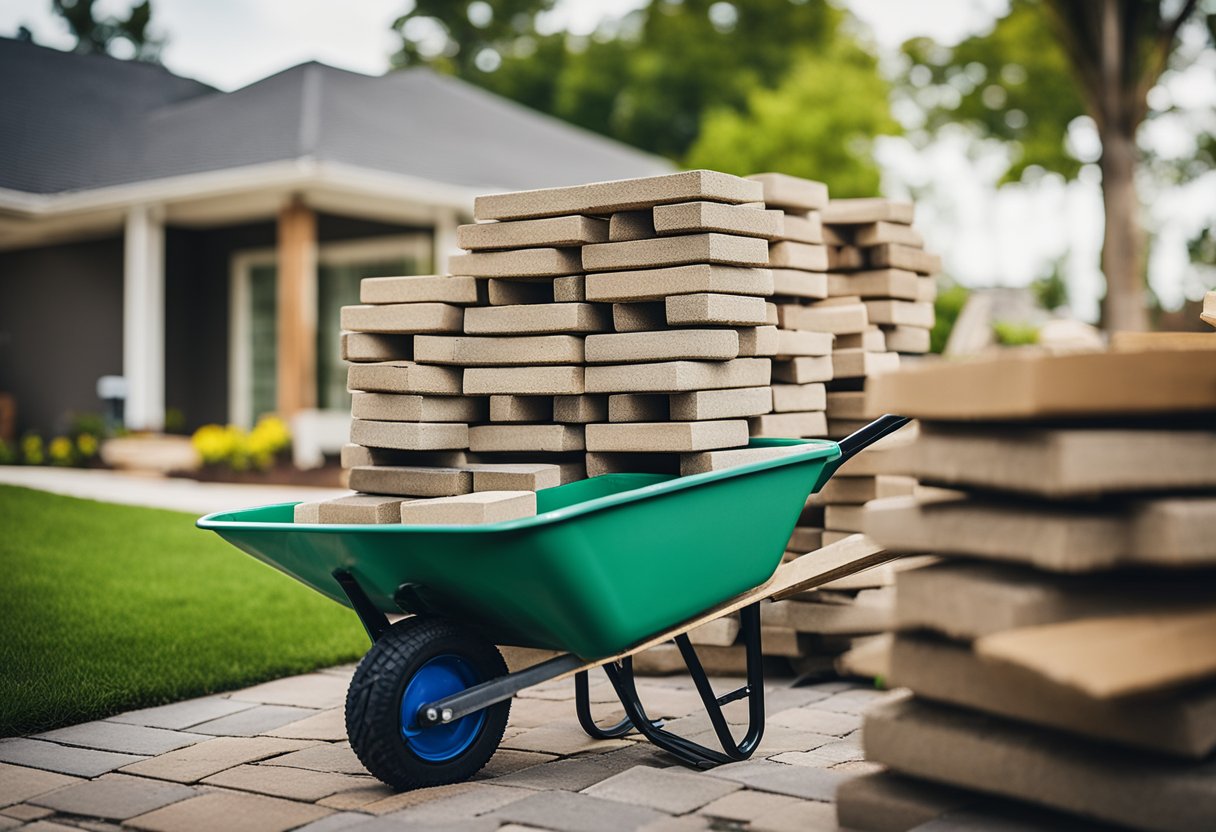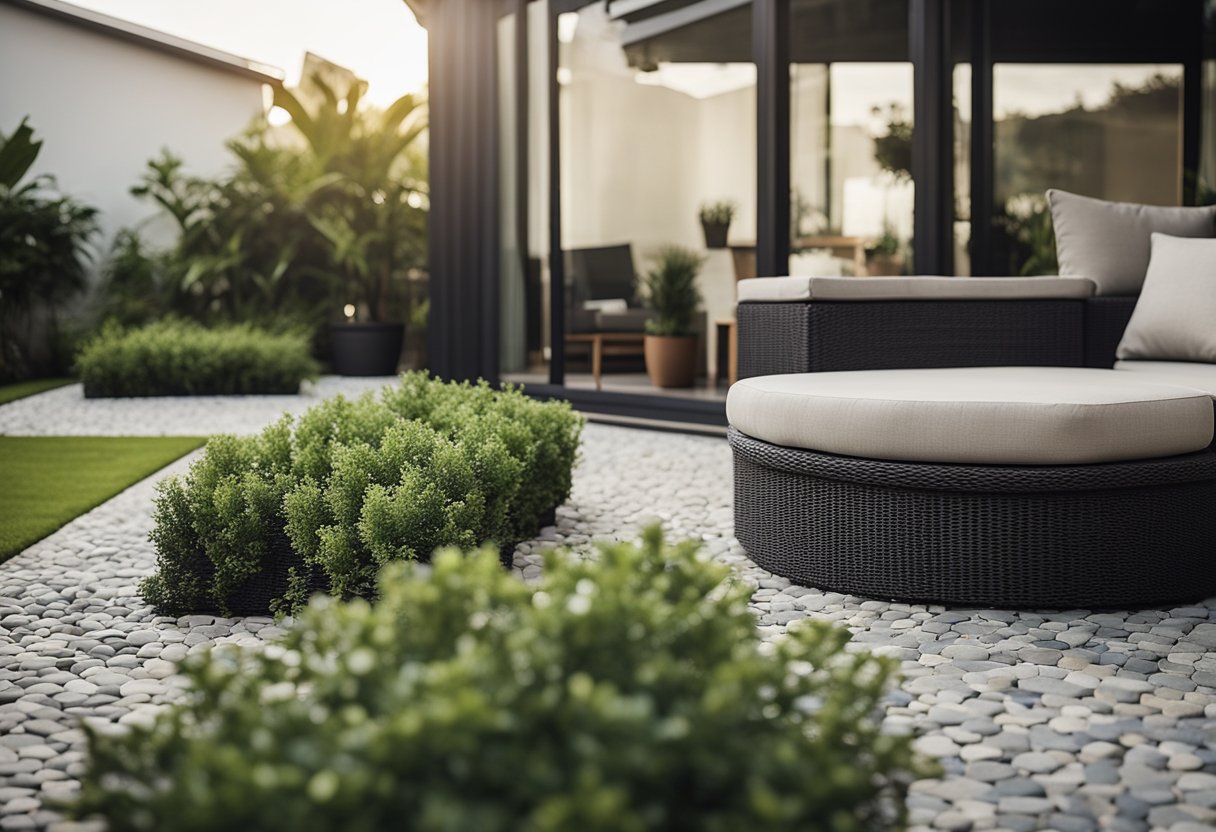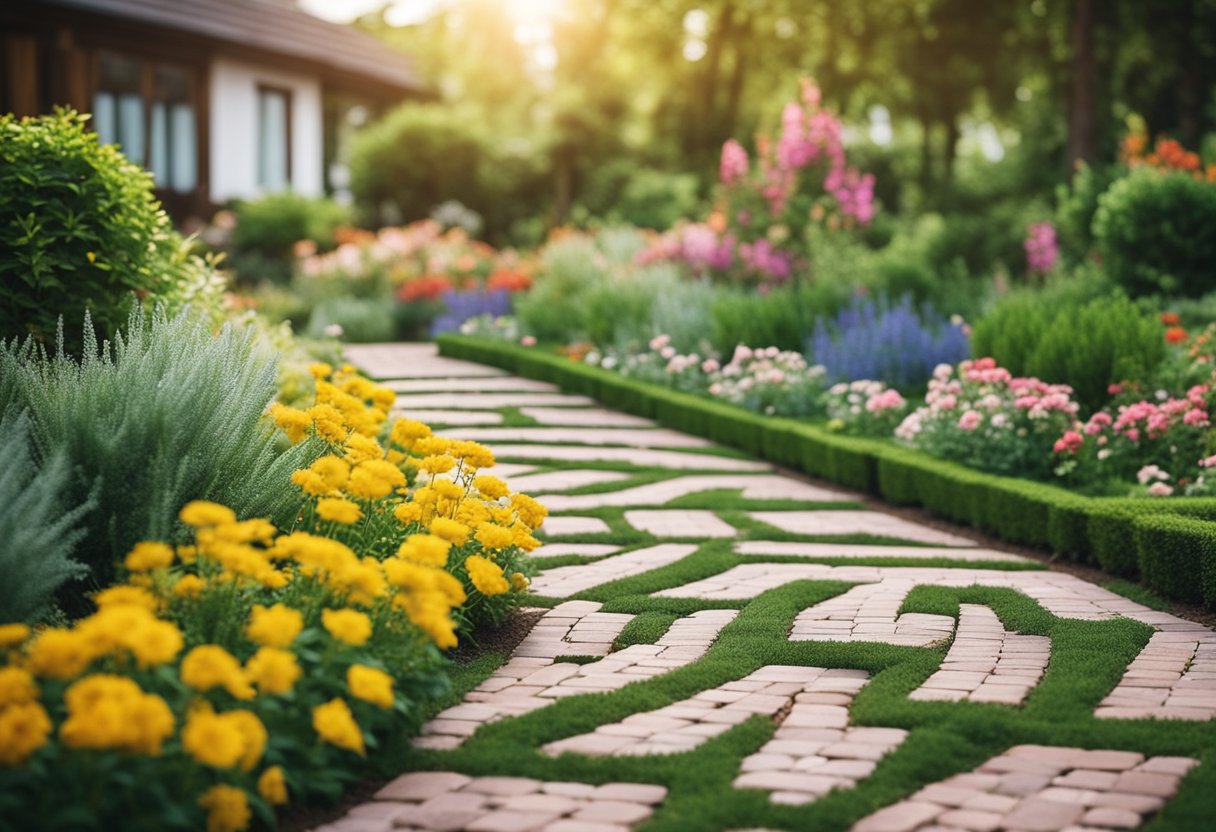You’ve completed your landscaping project and now find yourself with a surplus of pavers. Don’t fret – extra pavers can be a blessing in disguise! There are countless creative and practical ways to repurpose them in your yard, enhancing both the beauty and functionality of your outdoor space.

Think of those extra pavers as the building blocks to creating unique features within your landscaping. Whether you’re looking to add more seating areas, pathways, or even garden bed edgings, these versatile materials can help you achieve the look you desire. Not to mention, repurposing pavers is an environmentally-friendly option, as you’re giving new life to materials that might otherwise end up in a landfill.
In the following sections, we’ll guide you through some great ideas for transforming those leftover pavers into attractive and useful additions to your yard. From novice DIY enthusiasts to experienced landscapers, there’s bound to be something for everyone. So, let’s dive in and explore the potential of those extra pavers!
Creating Functional Spaces

Extra pavers can be transformed into functional and attractive spaces in your backyard. In this section, we will discuss how to utilize these pavers to design a patio, build a fire pit, and establish outdoor seating.
Designing a Patio
A patio can greatly enhance the appeal and usability of your outdoor space. When designing your patio, consider the size, shape, and placement that will complement your yard. You can choose from various materials like stone, concrete, or brick pavers, depending on your personal preferences and budget.
- Choose the location: Consider the level of the ground, proximity to your home, and how the sunlight will affect the space.
- Prepare the site: Remove any grass or plants and level the area using a combination of gravel and sand.
- Lay the pavers: Create your desired pattern with your extra patio pavers, ensuring they are level.
Remember to keep in mind factors like cost and maintenance when designing your patio, as they may affect your overall satisfaction.
Building a Fire Pit
A fire pit can be a cozy and inviting focal point in your backyard. To build one using extra pavers, follow these steps:
- Select a location: Choose a level spot that is a safe distance from your home, trees, and any flammable materials.
- Dig a hole: Dig a 6-12 inch deep circular hole with a diameter of about 2-4 feet, depending on your desired fire pit size.
- Add gravel: Fill the hole with 2-4 inches of gravel to promote drainage.
- Lay the pavers: Arrange the pavers in a circle around the hole, stacking them two or three layers high, depending on the desired height of your fire pit.
- Seal the gaps: Fill any spaces between the pavers with masonry sand or fire-resistant mortar.
Building a fire pit with extra pavers can be a cost-effective and straightforward project.
Establishing Outdoor Seating
A well-designed seating area can create a comfortable and welcoming atmosphere for your outdoor space. You can utilize extra pavers to create various types of seating:
- Benches: To construct a bench, stack pavers in a horizontal row to create the base and attach a wooden seat on top. Add a few cushions for added comfort.
- Steps: Place pavers at different levels, with each step being roughly 18 inches deep and 6 inches high. This creates a casual and unique seating option.
- Low walls: Build low walls with pavers to define your patio or fire pit area, and add flat concrete or stone caps that serve as seating surfaces.
Establishing outdoor seating with extra pavers can enhance the functionality of your backyard and create inviting spaces for gatherings and relaxation.
Beautifying Your Garden

Your garden is a reflection of your creativity and love for nature. Enhancing its charm can be both fun and rewarding. One effective way to add some visual interest and value to your garden is by using leftover pavers. In this section, we’ll explore two great options: creating a garden path and adding planters.
Creating a Garden Path
A garden path made with natural stone pavers or square, concrete-stained ones can add a touch of elegance to your garden. Here’s a brief guide to get you started on this DIY project:
- Choose the path: Map out the pathway where you want the stepping stones to go. You can place them through grass, a flower bed, or any other area in your garden you’d like to highlight.
- Select your materials: Browse through your collection of leftover pavers and select the ones that best fit your vision. Remember, mixing and matching different shapes and sizes can add some visual interest and charm.
- Install the pavers: Begin by digging out a shallow hole for each paver, compact the soil, and then place the paver. Ensure that the pavers lay flush with the surrounding surface to prevent any tripping hazards.
A well-designed garden path can help guide visitors through your garden while protecting the delicate plants and grass from foot traffic.
Adding Visual Interest with Planters
Another creative option for your extra pavers is to construct custom planters for your potted plants. Not only do they offer visual interest, but they can also help manage the growth of your plants and provide support for their stems. Here’s a suggested process to build your planter:
- Select your design: It’s crucial to have a clear idea of the shape and size of your planter before you start. Consider the types of potted plants you want to showcase and their specific needs.
- Choose the pavers: Just like with the garden path, select the leftover pavers that will work best for your planter. You have the option to use a single type or mix different materials, such as natural stone or stained concrete.
- Arrange the pavers: Start by placing the pavers on the ground in your desired configuration. Stack pavers as needed to create the desired height, ensuring they are stable and adequately support your plants.
- Add the plants: Once the planter is complete, gently transfer your potted plants to their new home, and carefully arrange them to optimize visual appeal and growing conditions.
Reusing your leftover pavers to create beautiful planters and paths will not only give your garden a unique charm but also demonstrate your commitment to sustainable practices and resourcefulness. Happy gardening!
Recycling and Repurposing Pavers

Re-use in Landscaping
Leftover pavers can be a valuable addition to your yard and garden. Considering their durability, they can serve as reliable base materials for various landscaping projects. For instance, you can break them down and use them as ground covers in place of mulch or gravel.
Create a visually appealing pathway by arranging the bricks in a unique pattern and filling the gaps with soil, pebbles, or moss. You can also repurpose your pavers as decorative outdoor lighting. Place solar lights or candles on top of the bricks to illuminate your garden at night, adding a cozy ambiance to your outdoor space.
| Ideas | Materials Needed |
|---|---|
| Pathways | Soil, pebbles, moss |
| Ground covers | Mulch or gravel |
| Outdoor lighting | Solar lights or candles |
Children’s Craft Projects
Encourage your kids to tap into their creativity with fun and engaging craft projects using the extra pavers. These bricks can be easily transformed into colorful doorstops, painted to resemble animals, or made into unique garden decorations.
Here are a few ideas:
- Garden stepping stones: Have your children paint their favorite designs or creatures on the pavers.
- Personalized doorstops: Let them paint their names or initials along with some fun patterns.
- Mini herb planters: Hollow out small sections of the pavers and plant herbs or small flowers.
Remember to supervise your kids during these craft activities, and make sure they wear appropriate safety gear, such as gloves and goggles.
Frequently Asked Questions
How can I repurpose extra pavers in the garden?
You can use extra pavers in the garden to create borders for flower beds or vegetable patches. Simply dig a shallow trench along the edges and place the pavers vertically with about half of their height buried. This will provide a neat and tidy appearance, while keeping your plants contained.
What are some creative ideas for leftover paver art?
Leftover pavers can be turned into beautiful garden art pieces. Consider painting or using mosaic techniques to create unique designs on the paver surfaces. You can then arrange them as a focal point in your garden or place them throughout your landscaping as decorative accents.
Can I use extra pavers to build outdoor furniture?
Definitely! Extra pavers can be used to create functional outdoor furniture like benches or tables. Arrange the pavers to form a stable base, ensuring the weight is well-distributed. Add a cushion or a wood plank on top for seating or table surface. It’s a cost-effective way to add some charm to your outdoor space.
How do I create a unique paver walkway?
To create a unique paver walkway, experiment with different paver patterns or combine pavers of different shapes, sizes, and colors. You can also incorporate curves, zigzags, or other patterns, rather than a straight path. Make sure the walkway is level and well-packed to ensure stability and longevity.
Is there a DIY project for using extra pavers on a patio?
Yes, you can create a striking patio space by using extra pavers. First, outline the desired size of your patio and excavate the area. Level the ground and add a layer of gravel for drainage, followed by a layer of sand for leveling. Arrange the pavers, leaving small gaps for sand or grass to grow between them. Compact and fill gaps to secure pavers in place.
What are some alternative uses for leftover pavers indoors?
Leftover pavers can be repurposed indoors as well. You can create unique and durable coasters or trivets by attaching felt or cork to the bottom of the pavers. You can also use similarly designed pavers as decorative wall art by mounting them on your walls using appropriate brackets. Just make sure the weight is securely supported.
